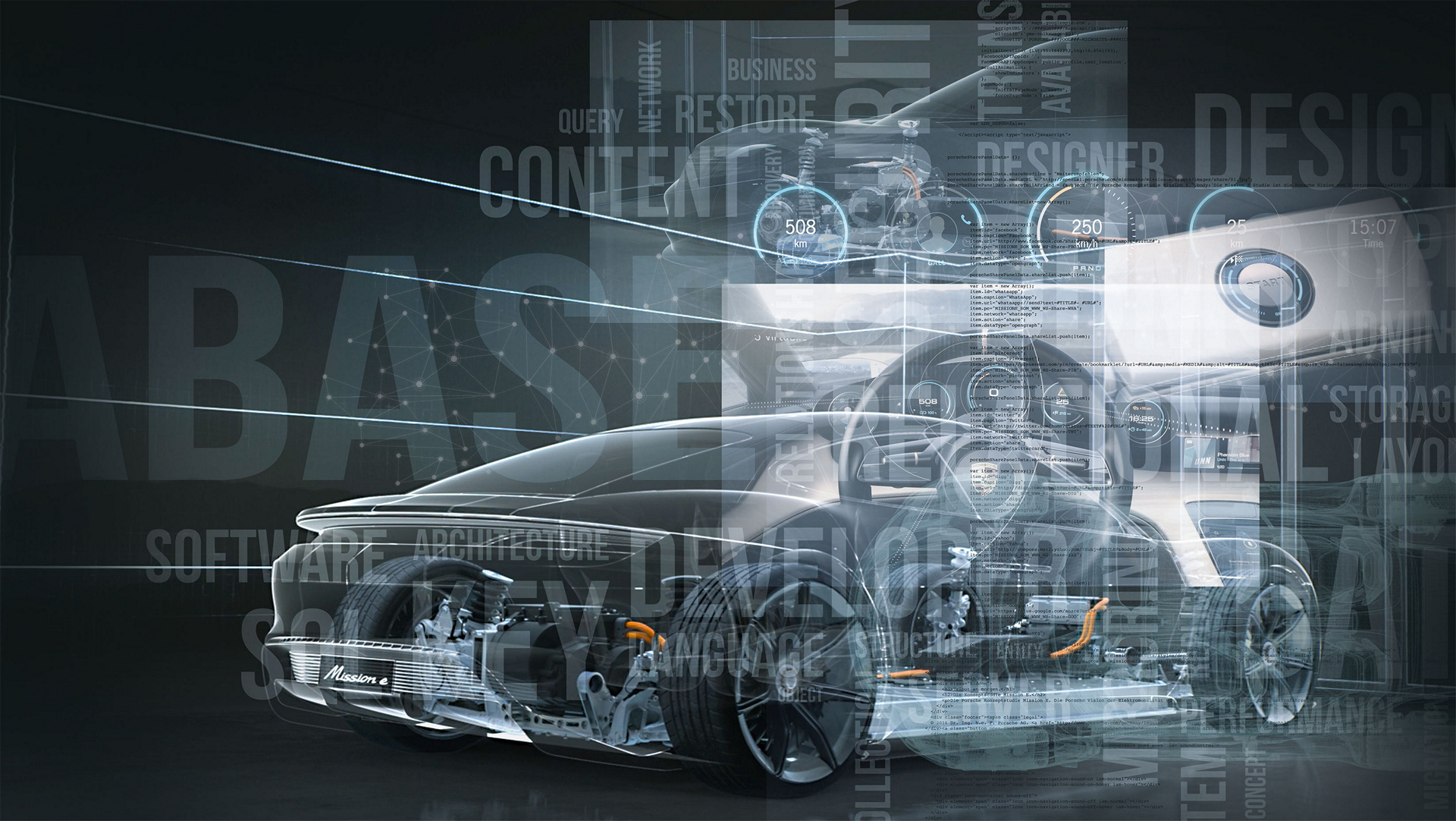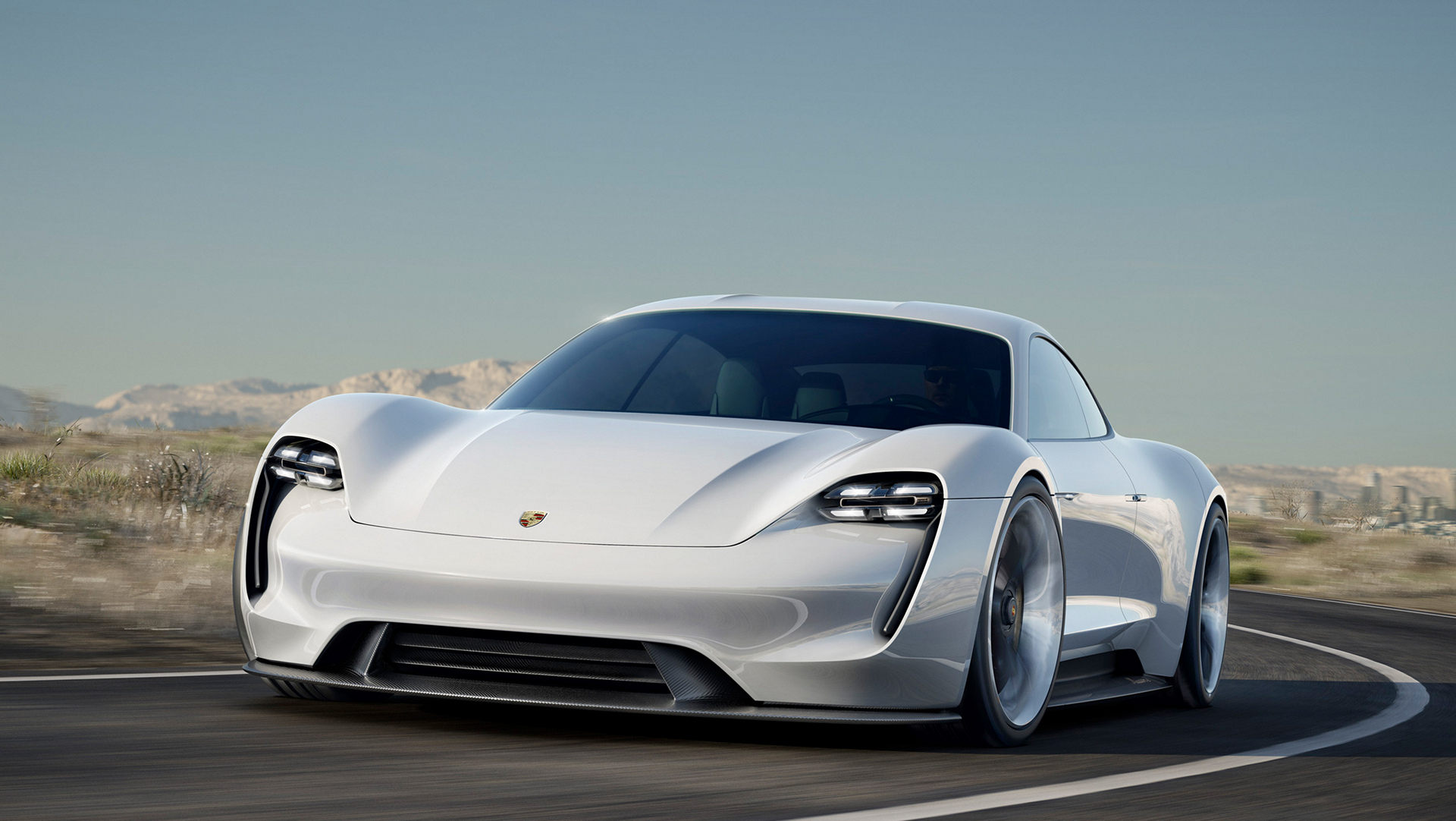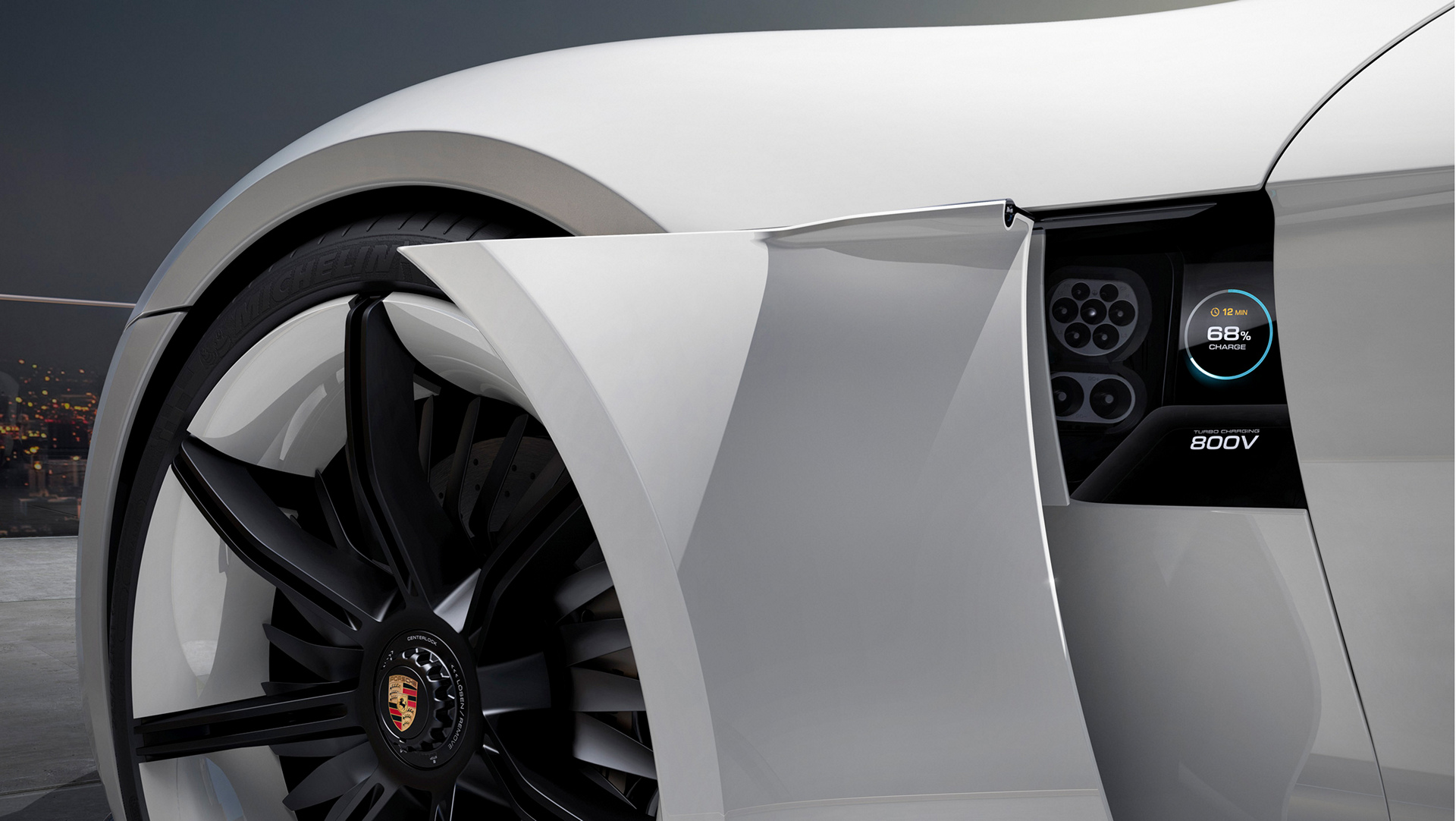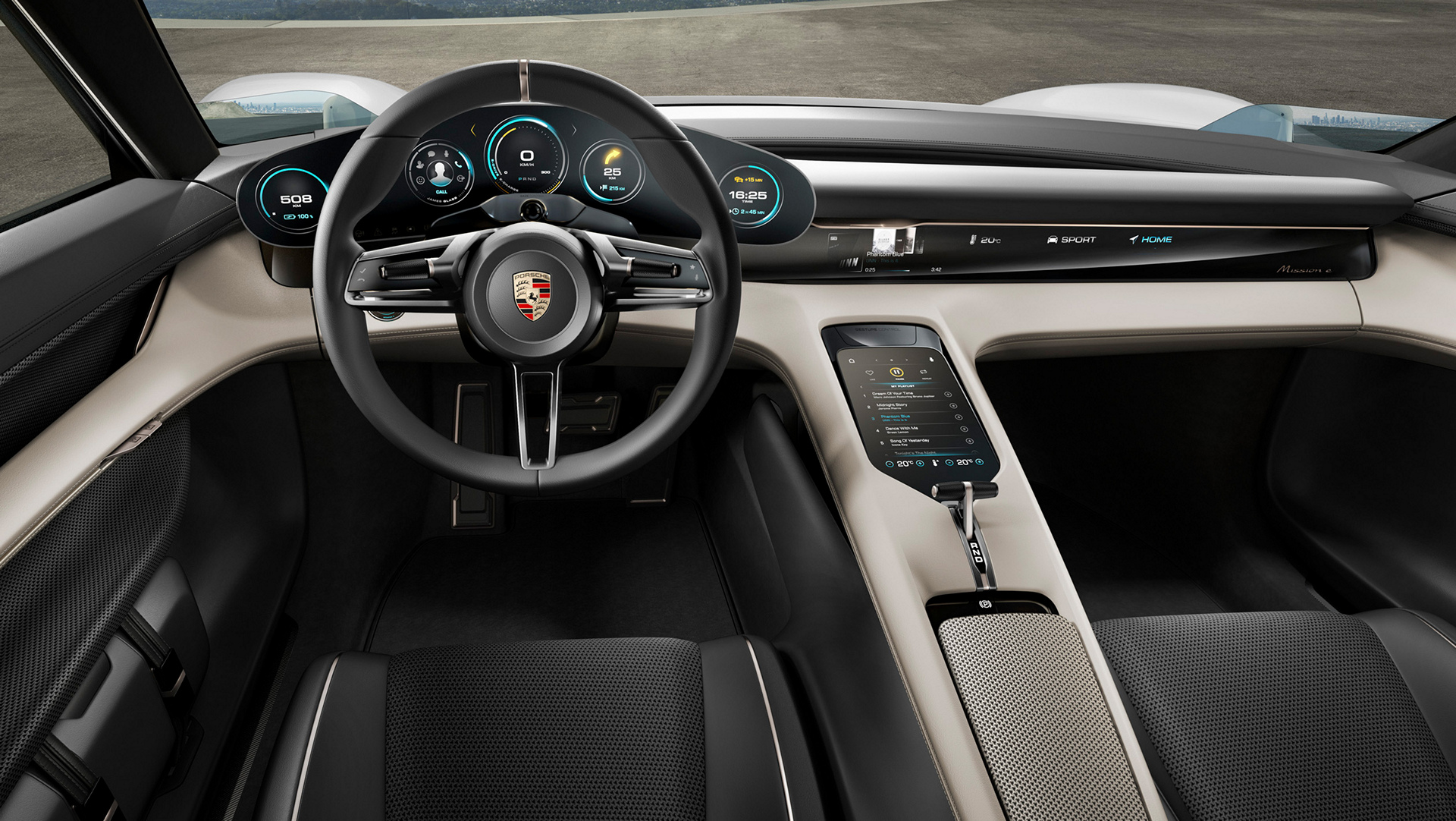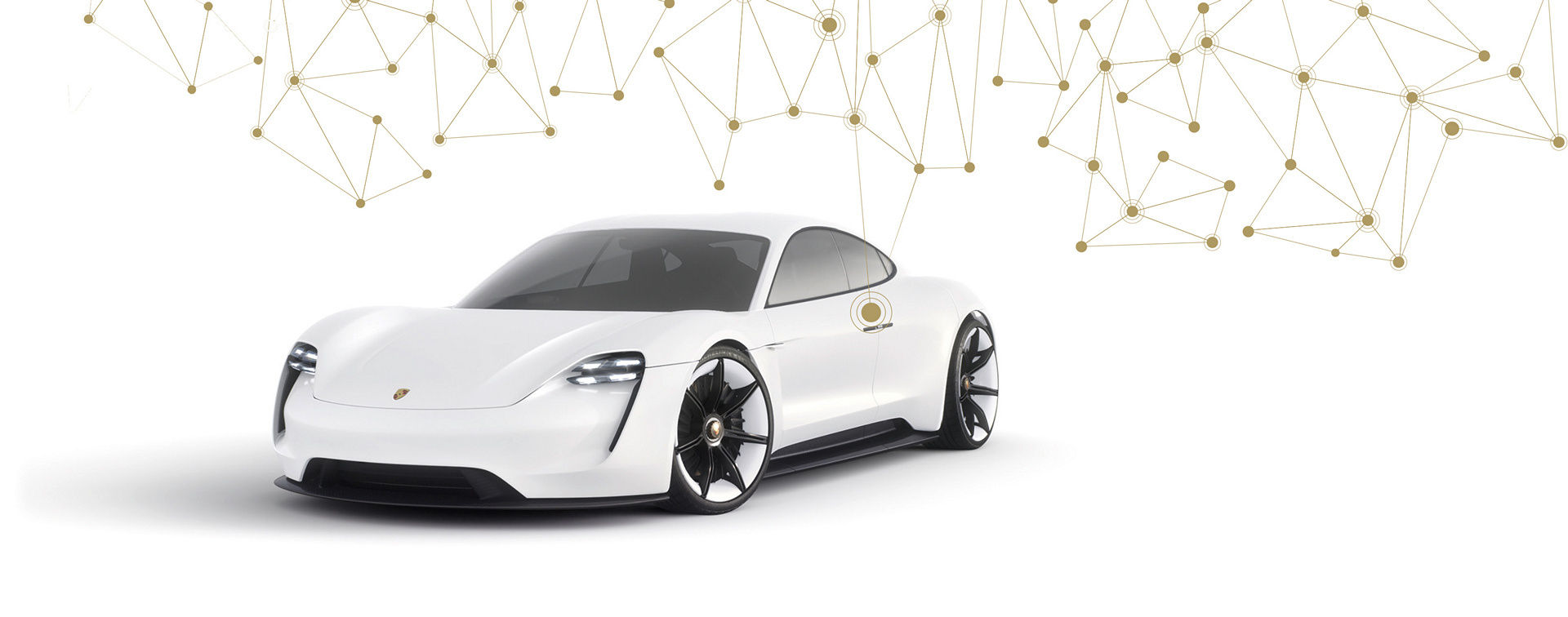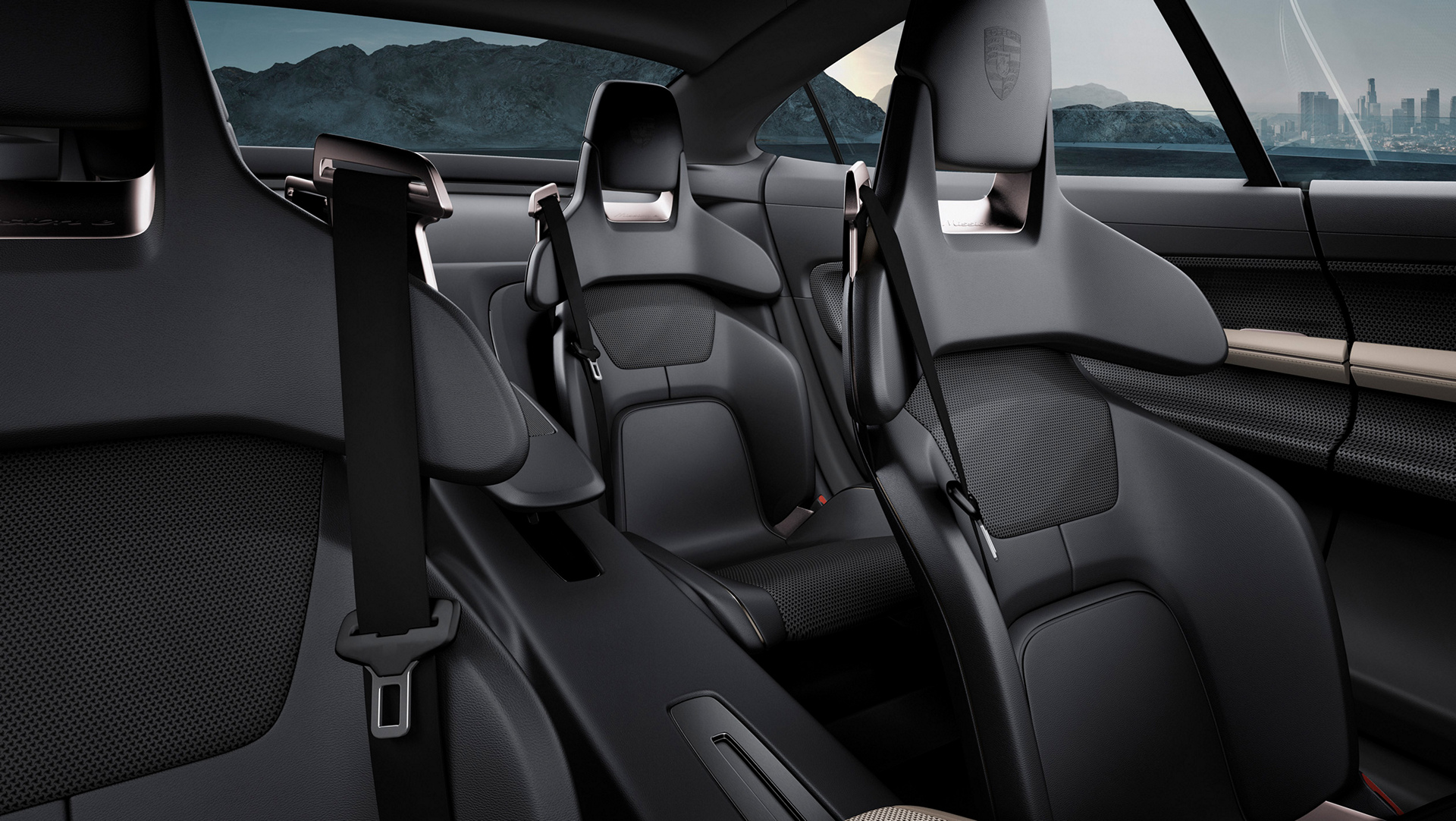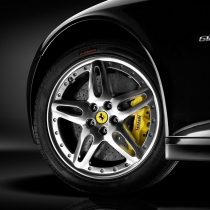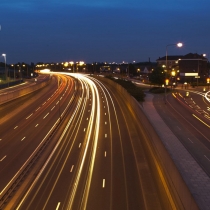Digitization is a megatrend that is rapidly changing the world. The automobile industry is on the verge of its biggest upheaval in decades – with huge opportunities opening up.
The future is dawning in Zuffenhausen almost without a sound,as Porsche’s Mission E is powered purely by electricity. The futuristic concept study caused a sensation among the trade professionals in Frankfurt and Detroit; Mission E will be demonstrating its pioneering mobility concept on roads around the world toward the end of this decade.
The electric drive with more than 600 horsepower will be fed from an 800 volt battery and will manage distances of over 500 kilometers. Navigation apps and networked devices in the interior are controlled by glances and gestures, while holograms put information within easy reach in the cockpit. Remote services can be used on an external tablet to configure or service the sports car.
Completely networked, combining the best of the digital and real worlds – that is the Mission E. And it embodies the future of the automobile industry on four wheels. Digitization is the all-encompassing topic occupying the industry; digital transformation is behind the most comprehensive and fastest change in decades that is taking place at all levels. The foremost trend facing the sector is “digitization and networks” – and it could totally upend the entire industry.
Digitized World
Already, more than 20 billion individual devices around the globe are connected to the internet – computers and tablets, smartphones and GPS devices, televisions, toys, fire alarms, and heating systems. Experts predict that the “Internet of Things” will expand to half a trillion devices by 2030. Components in the factories of tomorrow will constitute a large portion of these networked things; made possible by drastically falling prices for processors and network technology.
In 2014, mankind used its devices to send a total of 718 billion gigabytes of data around the globe. By just 2019, this volume is forecast to increase to two trillion gigabytes. And mobile network operators expect the data volume in transit to double every 18 months. Future road users will not just be able to access continuously updated information; they will also provide sensor data about themselves.
Everything will be communicating with and among everything else
Scientists are promoting Industry 4.0 – the fourth industrial revolution after the steam engine, assembly line, and computer technology. It is characterized by total networking and the computerization of all workflows. Everything will be communicating with and among everything else: humans and machines, components and central computers, customers and products.
So it is not just the actual Mission E gliding on its way that is heralding a new era at Porsche – new laws will also apply when it comes to producing the futuristic sports car: the laws of Industry 4.0, of intelligent production, of smart factories. As Porsche Works Council Chairman, Uwe Hück, says: “We need the technology of the future. “Over the next five years, the change in technology will be as massive as it was in the last 30 years combined,” explains Hück. “We need to make our production more intelligent, which is why we are building Porsche Production 4.0.” Porsche is investing a total of one billion euros in the Mission E project, of which around 700 million euros alone are being spent on expanding the company’s long-standing main plant in Zuffenhausen – where everything began.
Digitized Production
Digitization offers huge opportunities for the German automobile industry – equipped with the latest technology, bursting with innovation, and precise, it can use customized quality products and modern, efficient workflows to further expand its competitive advantage. A network therefore symbolizes Porsche Production 4.0 in every respect: no linearity, instead, an interwoven pattern of huge numbers of individual strings, dynamic nodes – rapidly extendable and always in flow. The smart factory is a “cyber-physical system”; central servers not only link workers and machines in the cloud, but also individual components. A product is no longer processed; it is actively involved in its own design. Mini chips with RFID control enable even minute parts to be individually marked or assigned to a specific order – and to communicate the same.
To date, robots have been working in separate cages – in the body shop, for example. Production 4.0 envisages robots and people working alongside each other. Components will move on autonomously operating, driverless conveyor systems through the production hall, for example, and can actively seek out and head for the next free machine. Given the diversity and large number of components used in the automobile industry, the potential for efficient and lean production mechanisms is huge.
Porsche Car Configurator: Products will be much more diverse in future
Human workers can inspect, monitor, and optimize all ongoing processes via the cloud. They can centrally service and inspect machinery that is fitted with numerous sensors. They will not become superfluous because of these machines. On the contrary: The employees remain key players; they will become creative designers, well-trained controllers. Digitization will not only make their work safer and less strenuous, but also more convenient. According to the Cologne Institute for Economic Research, job losses as a result of digitization are unlikely. It believes the need for trained professionals could actually increase further in Germany.
Products will be much more diverse in future, than they used to be. Even now, a Porsche customer can choose from more than one sextillion possible digital combinations. Using the Porsche Car Configurator they can compile their dream car online: black, jet black metallic, or agate gray? Racing yellow, guards red, sapphire blue metallic? Leather or alcantara interior? With dual lutch gearbox and Power Steering Plus, Vehicle Tracking System or TV tuner?
Unlike an assembly line, the Car Configurator may seem more like a gadget for demanding customers at first glance. But it shows where industry as a whole is heading – and not just the automotive sector. Increasingly, specific customer requirements and endless virtual options will need to be made reality. Customers want utterly individual customization and the smallest possible batch sizes, while producers must still guarantee maximum efficiency and perfectly coordinated workflows.
Mission E is a pioneering concept of mobility
Production schedules at Porsche are designed in a way that customers can still amend their personal configuration up to seven days before assembly commences. This gives future Porsche drivers undreamt-of options for customization. As far as the production process is concerned, however, offering such a service adds even more complexity, which can only be mastered within the customary short space of time with the aid of intelligent solutions. Physical measurements and process data are already captured during assembly: Screw tools, for example, supply torque values in real time. Big data analytics subsequently derive information about the ongoing process by combining the data, and can identify production errors early on – and immediately rectify them. Thus enabling customization combined with the highest levels of quality.
Production 4.0 is essential if all of these demands are to be implemented with maximum efficiency and within a realistic cost frame. Since the necessary capital expenditure is, however, enormous, the opportunities offered by Production 4.0 must be exploited in full, and the focus must center on creating conditions that are optimized for production at the early stages of planning new factories and designing processes. 3-D models and other digital planning methods can help to assure in advance that a product can subsequently be produced efficiently. In addition, production equipment can be designed to ergonomic standards, optimized material flows for the paint shop can be factored in, and processes can be digitally assured. Digital planning and the intelligent use of new technologies therefore considerably reduce ongoing production costs at Porsche long before a new model comes off the assembly line – while at the same raising the benchmark of product perfection even further.
Digitized Mobility
Digitization is, however, not just an opportunity for the automobile industry; it also presents a huge challenge. New, ambitious competitors are pushing their way onto the market. The competition is expanding to include software and data providers: Google is researching its self-driving car, while rumors of an Apple iCar are stubbornly persisting. As far as conventional automobile manufacturers are concerned, they need to retain title to their customer data rather than losing the interfaces to their customers to companies in Silicon Valley, and to satisfy demand for connectivity, customization, and digital mobility with proprietary products. The vehicle industry must evolve from merely producing mobile carriers to providing intelligent mobility concepts.
Of course engines will still need to operate reliably, and chassis and software will need to be perfectly attuned in future, but a modern car has long since progressed beyond just being a means of transport. It is an office, living room, and vehicle all rolled into one. Connectivity tools create links to mobile devices, providing convenience and entertainment. The car of the future doesn’t just make its drivers mobile; it createsmobility – together with all other road users.
The requirements for a smart car are increasing dramatically
Already, navigation systems analyze traffic in real time, detect traffic jams, and recommend alternative routes. In future, cars, buses, and trains will actively discuss and shape the current situation together. The requirements for a smart car are increasing dramatically. It speaks numerous languages and communicates on a permanent basis. For example, it transmits safety-related information from car to car, such as where a traffic jam ends, braking maneuvers, or obstacles; real-time information is obtained by vehicle to infrastructure – from traffic signals, roadworks, or railway crossings. Communication is the crucial key to autonomous driving – a self-driving car can only find its way if it has precise information and perfectly coordinated workflows.
The data from the automobile and its surroundings is collected at what is known as the back end, and processed further. One totally new challenge facing the automobile industry is to now create the perfect interface between this background data and individual vehicles. This will necessitate new developments and cooperation partnerships, the definition of new system boundaries, and finding answers to problems that have not yet been resolved. The security of the data connection must be guaranteed, for example: hackers must not be able to penetrate the sensitive vehicle network under any circumstances. Customers must also be reassured that their personal details are in utterly secure hands at all times.
The innovative display and operating concept of the Mission E
As such, vehicle development as a whole is venturing into wholly new terrain: connectivity and artificial intelligence, big data, data mining, taking some functions out of vehicles and into computer centers, and data encryption algorithms, to name just a few examples.
The future of the automobile is digital
Looking ahead, the mission for the conventional automobile industry is clear: It must actively help to shape digitization, further expand its areas of expertise, and lead the way on the path to future mobility. Ultimately, digitization serves just one purpose – efficiency. Traffic that is completely interlinked and coordinated saves valuable time, avoids traffic jams, and reduces emissions. Driver assistance systems and autonomous driving concepts enhance safety and create options for performing other useful tasks during a journey. In addition, Production 4.0 streamlines processes and creates enormous scope for customization without compromising production times.
According to a survey published by industry association Bitkom at the end of 2015, 96 percent of all German companies in key sectors of industry see digitization as an opportunity. The vehicle industry proved to be the most confident: 86 percent of the managers who were interviewed see their sector ranking among the very best in respect of digitization in ten years’ time, with 22 percent even believing they will become global leaders.
Yet one thing is certain: the future of the automobile is digital. Anyone wanting to stay in the lead in this race for the future needs to be in pole position now.


